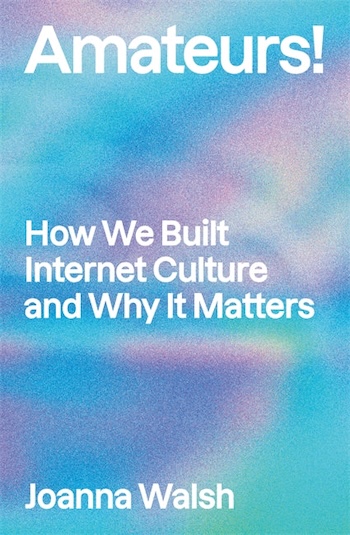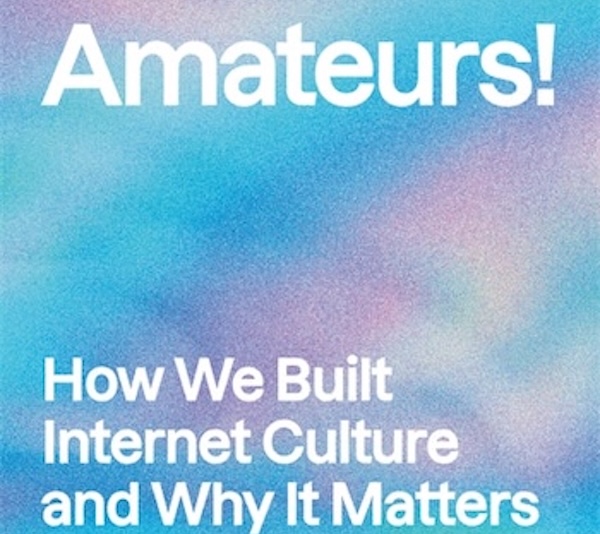By Preston Gralla
There’s a great book to be written about how everyday users create the content that powers the web, while billionaires reap the profits. But this one isn’t it.
Amateurs! How We Built Internet Culture and Why It Matters by Joanna Walsh. Verso Books, 272 pp. Paperback, $24.95.
 Tom Sawyer is an ideal role model for any would-be tech titan. Convincing people it was a rare privilege to paint his fence for him, and then getting gifts from them for doing for it — a kite, a handful of marbles, and a dead rat and a string to swing it on — turns out to be a scalable technique.
Tom Sawyer is an ideal role model for any would-be tech titan. Convincing people it was a rare privilege to paint his fence for him, and then getting gifts from them for doing for it — a kite, a handful of marbles, and a dead rat and a string to swing it on — turns out to be a scalable technique.
If Tom were real and alive today, he’d get a lot more than a dead rat on a string when people do his work for him: A multibillion-dollar Internet company. Since the earliest days of the web, fortunes have been built because people have been willing to create content for free as a way to connect with others, while tech titans find ways to make money off their labor.
That’s one of Joanna Walsh’s central arguments in this book, and she’s right on target. She writes:
The proletarians of the screen — the influencer/tweeter/TikToker — make aesthetic content for their platforms via a means of production they do not own, and the platform owners recoup the economic surplus-value, but the whole process runs on another, less recuperable surplus: the consumers’ and the makers’ surplus-enjoyment, which hides the labour in this process. Online, what looks like leisure is now work.
That web dynamic, she points out, didn’t start with the social media sites that use the technique so well. She harkens back to the earlier days of the web and LOLCat site www.icanhascheezburger.com in 2007 as a forerunner to more sophisticated sites that steal people’s labor and convince them they’re having fun.
For the lucky among us whose memory is short or have never encountered a LOLCat, a LOLCat was a photo of an adorable cat with a self-consciously childish wacky caption like “I can has cheeseburger?” The icanhascheezburger site which hosted it all was launched on a lark and made the initial founders no money. But then it was bought by a savvy entrepreneur who figured out ways to grow traffic by deploying tricks like having people rating each LOLcat on a one-to-five scale, and selling ads with each page view.
Those were simpler days, of course. So, to bring things up to date, Walsh traces the many ways in which the online aesthetic created by web consumers has been milked over the years by smart tech execs to become immensely wealthy.
She makes more than that economic argument, though. She also argues that web users have created their own distinctive online aesthetic and traces how that aesthetic has evolved since the earliest days of the web. And that’s where things go off the rails. Her writing and analysis of the changing web’s aesthetic is so full of dense jargon, fractured syntax, and attempts to be au courant at all times, that it’s largely incomprehensible. Good luck deciphering this example, which is typical of much of what you’ll find in the book:
Though there are clear links between the stuplimity of LOL-speak and the language of digital blackface, LOLcats don’t directly quote external media either visually or lexically but are hermetic, feeding only off other LOLcats. That the speakers are now cats creates an ‘interesting’ distance, explaining LOLcats’ popularity with L2 speakers like Huh as a safe space for playing out and playing with ‘mistake’, a mechanism that is matched by LOLcats’ tendency to depict cute #fails.
If that’s not enough to put you off this book, it’s also seriously marred by Walsh trying far too hard to find big meanings and portents where there are none. In just one example, she writes about the composer William Basinski releasing tape loops on CDs which were made from some of his ambient noise recordings. He noticed that when he transferred the loops to digital media their quality deteriorated — no great revelation. She writes that when he made the final loop transfer to a CD on September 11, 2001, he went to his rooftop and videotaped the Twin Towers disintegrating. Then she says this:
Basinski’s work marked a moment of change in global politics and in global technology. It put the world in which the Twin Towers existed into the past, where it survived only on the cover of Macintosh Plus’s vaporware album Floral Shoppe. Basinski’s tape caught the last train from analog to digital.
There’s so much wrong with that paragraph that it’s hard to know where to begin. Suffice it to say, in Walsh’s desperate attempt to find meaning where there’s none, she gets everything in it wrong.
It’s a shame she falls into these traps. There’s a great book to be written about how everyday users create the content that powers the web, while billionaires reap the profits. But this one isn’t it.
Preston Gralla has won a Massachusetts Arts Council Fiction Fellowship and had his short stories published in a number of literary magazines, including Michigan Quarterly Review and Pangyrus. His journalism has appeared in the Los Angeles Times, Dallas Morning News, USA Today, and Boston Globe Sunday Magazine, among others, and he’s published nearly 50 books of nonfiction which have been translated into 20 languages.

